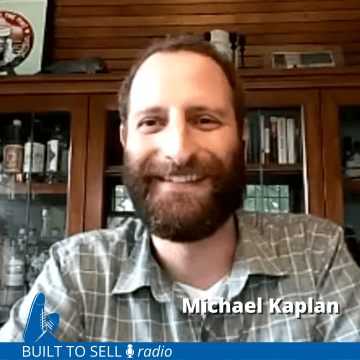About this episode
Back in 2006, Michael Kaplan and his partners bought into a Zerorez Carpet and Living Surfaces Care franchise. The business was generating $300,000 in revenue and losing $40,000 a year.
By 2019, the company was generating $17 million in revenue when Kaplan and his partner had an irreconcilable dust-up which led to Kaplan triggering their shotgun partnership agreement. In the end, Kaplan sold for around four times EBITDA.
This story has some fantastic twists and turns, and through it all, you’ll discover:
- Why Kaplan refers to the “no man’s land” between a start-up and a mid-sized business as “the awkward teenage years.”
- How to leverage word of mouth to grow your business.
- The Price vs. Value equation and why getting it right is the key to increasing your Net Promoter Score.
- The danger of “aspirational” core values.
- A definition for a “waterfall” distribution.
- Why it may be time to sell if you feel as if you are “trading misery for dollars.”
- How a shotgun agreement works and how that’s different from an operating agreement (and why you need both if you have partners).

About Our Guest
Michael Kaplan spent most of his 20s thinking he would go into some sort of law practice. However, he found himself partnering with a friend to purchase Zerorez. After a few stumbles and lucky economic breaks, Michael and his partners were able to scale the carpet cleaning business to 18 million dollars.
Michael Kaplan is now a private equity and angel investor who was part owner and president of the wildly successful carpet cleaning franchise called Zerorez. He is now associated with Red Hook Investments and is actively finding new ways to help small service companies grow.
Michael grew up in Minneapolis, moved to Maine (undergrad) then to Atlanta (for barbeque and bourbon) then to Boston (pondering a Jimmy John’s franchise) then to Minneapolis (law school), where help to turn around the troubled carpet cleaning business.
Over the last few years, he’s been focused on investing in small home service companies, by purchasing a minority interest in their company, providing capital and expertise along the way, and guiding the business to success. He also loves to buy distressed or “stuck” companies, within the home service space in order to unlock their value.
Connect with Michael:


